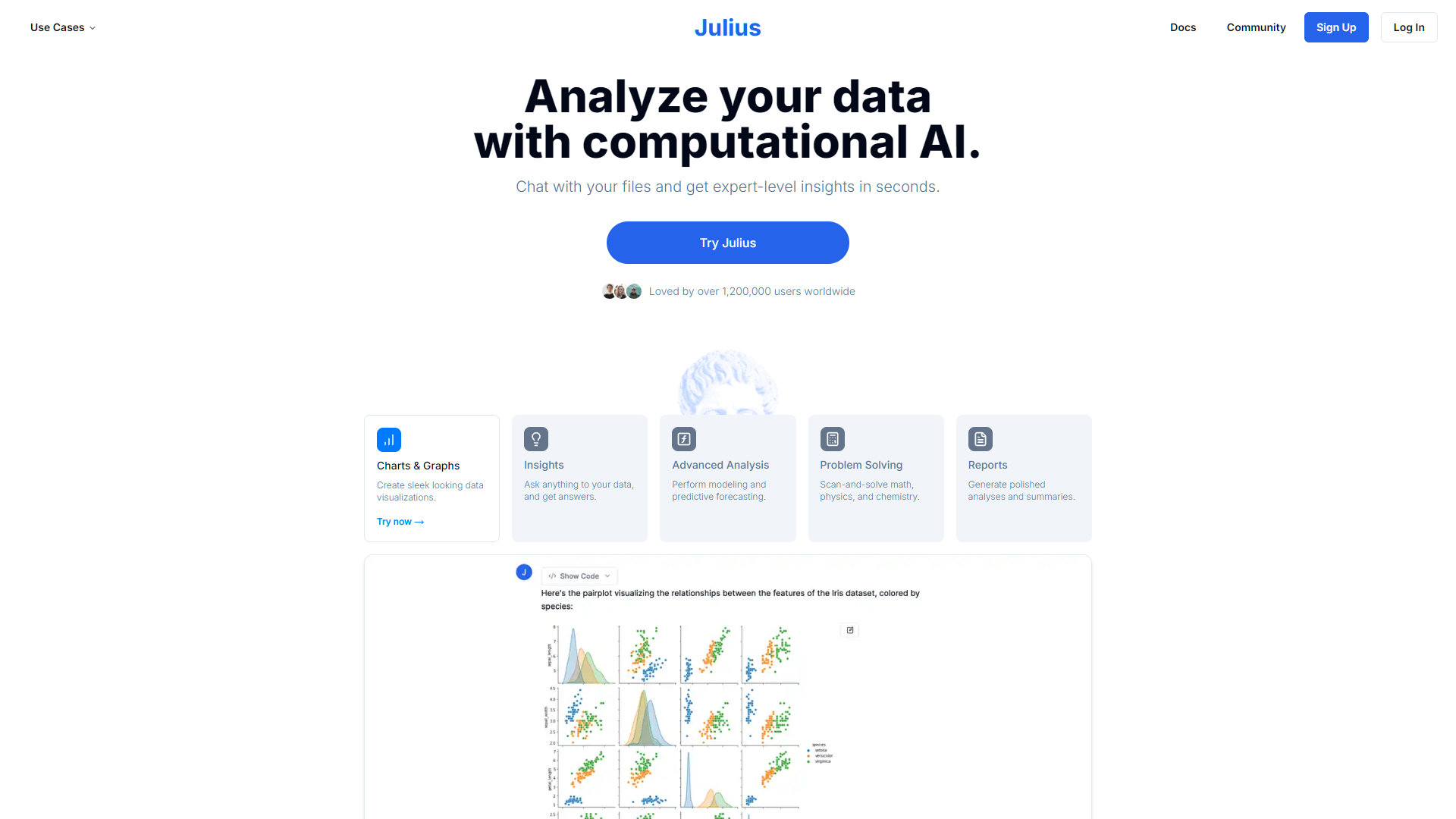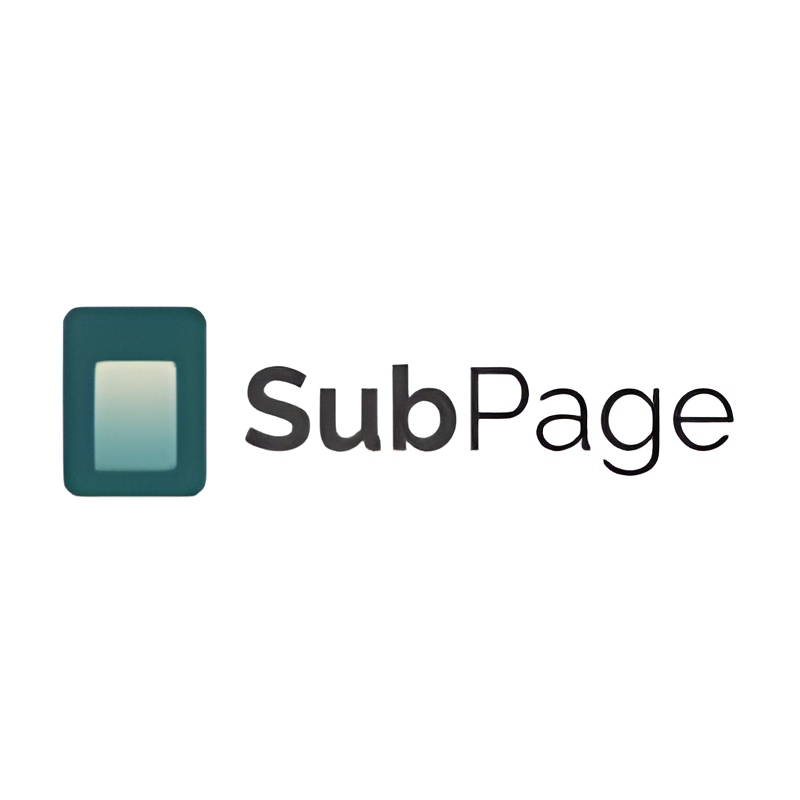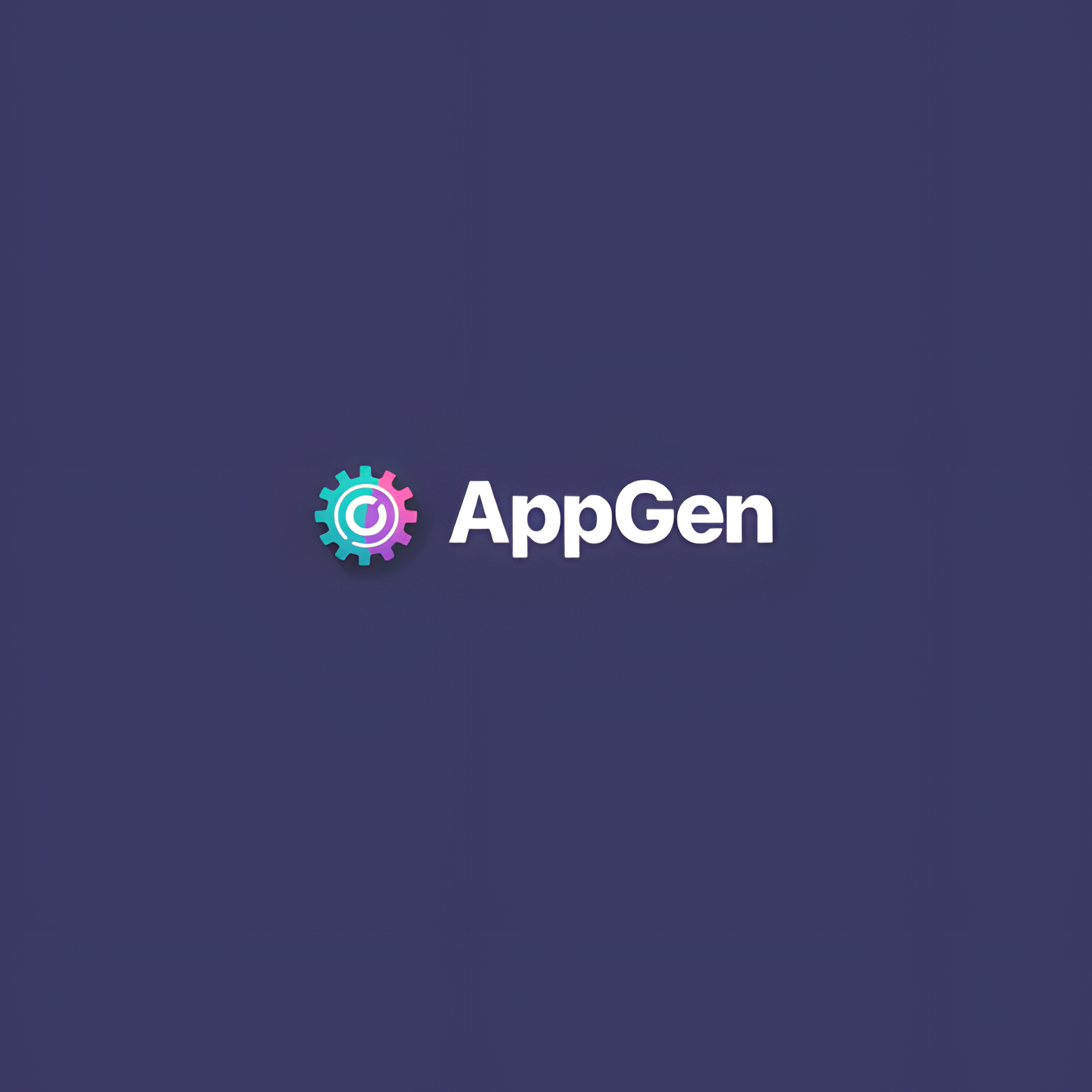Overview
Julius AI is a cutting-edge tool designed to enhance data analysis through advanced computational AI. It supports a variety of data file formats including spreadsheets, Google Sheets, and Postgres databases, making it highly versatile for different user needs. With Julius AI, users can effortlessly link their data sources and engage with them using intuitive natural language prompts.
This platform stands out by offering features such as sleek data visualizations, instant data question responses, and automated data cleaning, which streamline the analysis process and allow users to focus on deriving meaningful insights. Additionally, Julius AI enables the creation of dynamic animations and supports complex statistical modeling, making sophisticated analysis accessible without requiring deep technical knowledge.
Julius AI is trusted by over 1.2 million users globally and has received accolades from major publications like Forbes and Business Insider. It caters to a broad audience, including a significant discount for students and academia, ensuring that its benefits are accessible to a wide demographic. The platform prioritizes user security with stringent data privacy and access controls.
For those new to the tool or needing specific guidance, Julius AI offers a comprehensive FAQ section, detailed resources, and guides. Users can start with a free plan and have the option to upgrade for more advanced features, making Julius AI a scalable solution for data analysis needs.
Key features
- Instant data insights: Ask any data-related question and receive expert-level answers instantly, streamlining decision-making processes.
- Automated data cleaning: Focus more on analysis and less on prep work by automating the cleaning of your data, enhancing productivity and accuracy.
- Dynamic data visualizations: Create and customize sleek, informative visualizations that make complex data easily understandable and visually appealing.
- Advanced predictive modeling: Utilize AI-driven predictive analytics to forecast trends and outcomes, helping you make informed future decisions.
- Interactive data animations: Bring your data to life with engaging animations that capture attention and provide a dynamic way to present insights.
- Seamless data export: Easily export your analyzed data into CSV or Excel formats, facilitating smooth data sharing and reporting.
 Pros
Pros
- Scalable data integration: Seamlessly integrate with multiple data sources, allowing for scalable solutions that grow with your business needs.
- Real-time data processing: Process and analyze data in real-time, enabling immediate response to new information and faster decision-making.
- Collaborative data environment: Facilitate a collaborative workspace where teams can work together on data projects, enhancing communication and outcomes.
- Enhanced data security: Implement robust security measures to protect sensitive data, ensuring compliance with regulations and peace of mind.
- Customizable user interface: Tailor the user interface to meet specific user needs, improving usability and personalizing the experience for various roles.
 Cons
Cons
- High technical requirement: Requires users to have a strong technical background to fully utilize advanced features and understand complex analytics outputs.
- Overwhelming feature set: The extensive range of features can be overwhelming for new users, potentially leading to a steep learning curve.
- Dependence on data quality: The effectiveness of insights and predictions heavily relies on the initial quality of the input data, despite automated cleaning.
- Limited customization options: While visualizations are dynamic, there may be limitations in customization that restrict how data is presented or interpreted.
- Resource-intensive operations: Advanced features like predictive modeling and data animations may require significant computational resources, affecting performance.

















